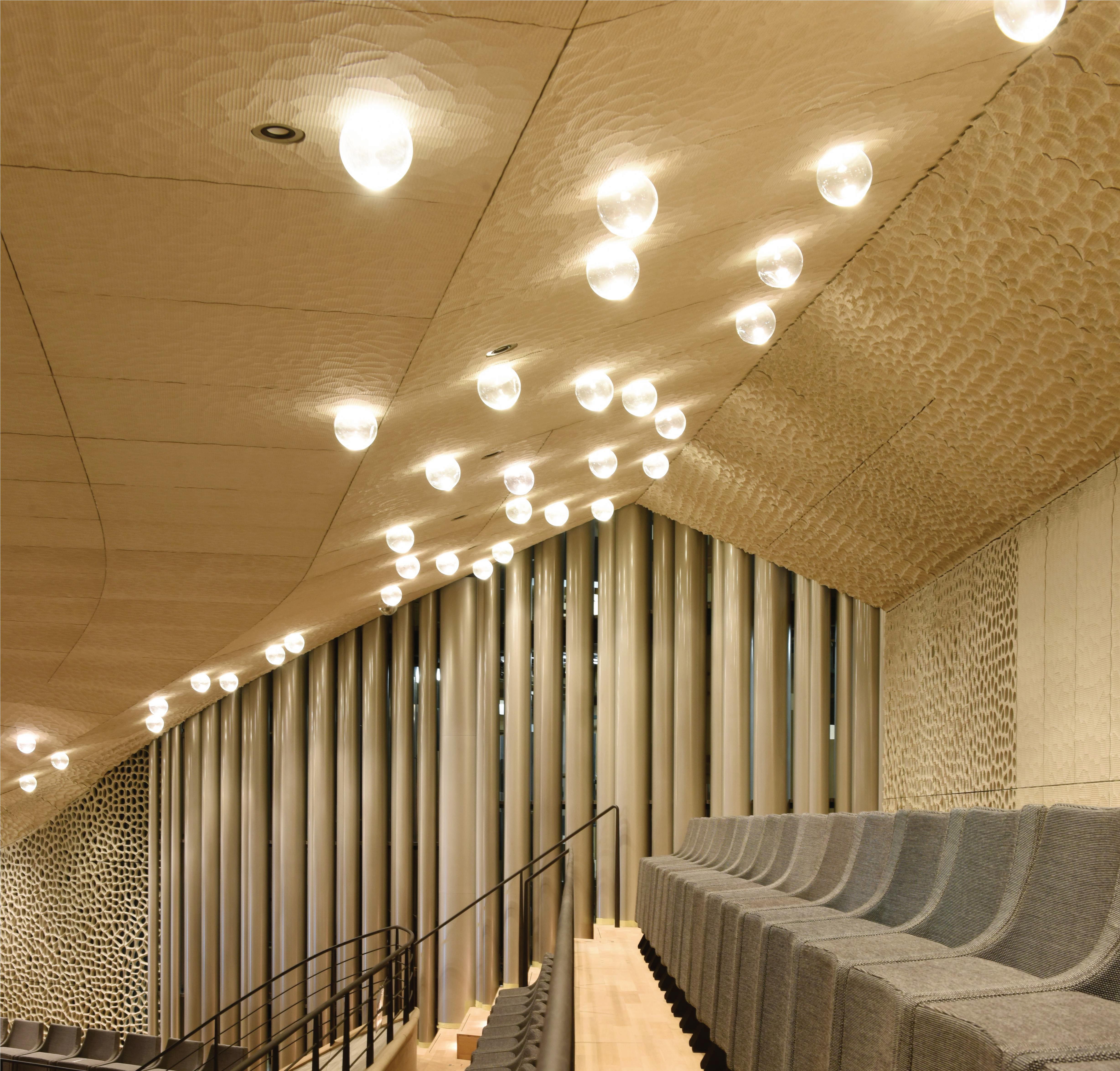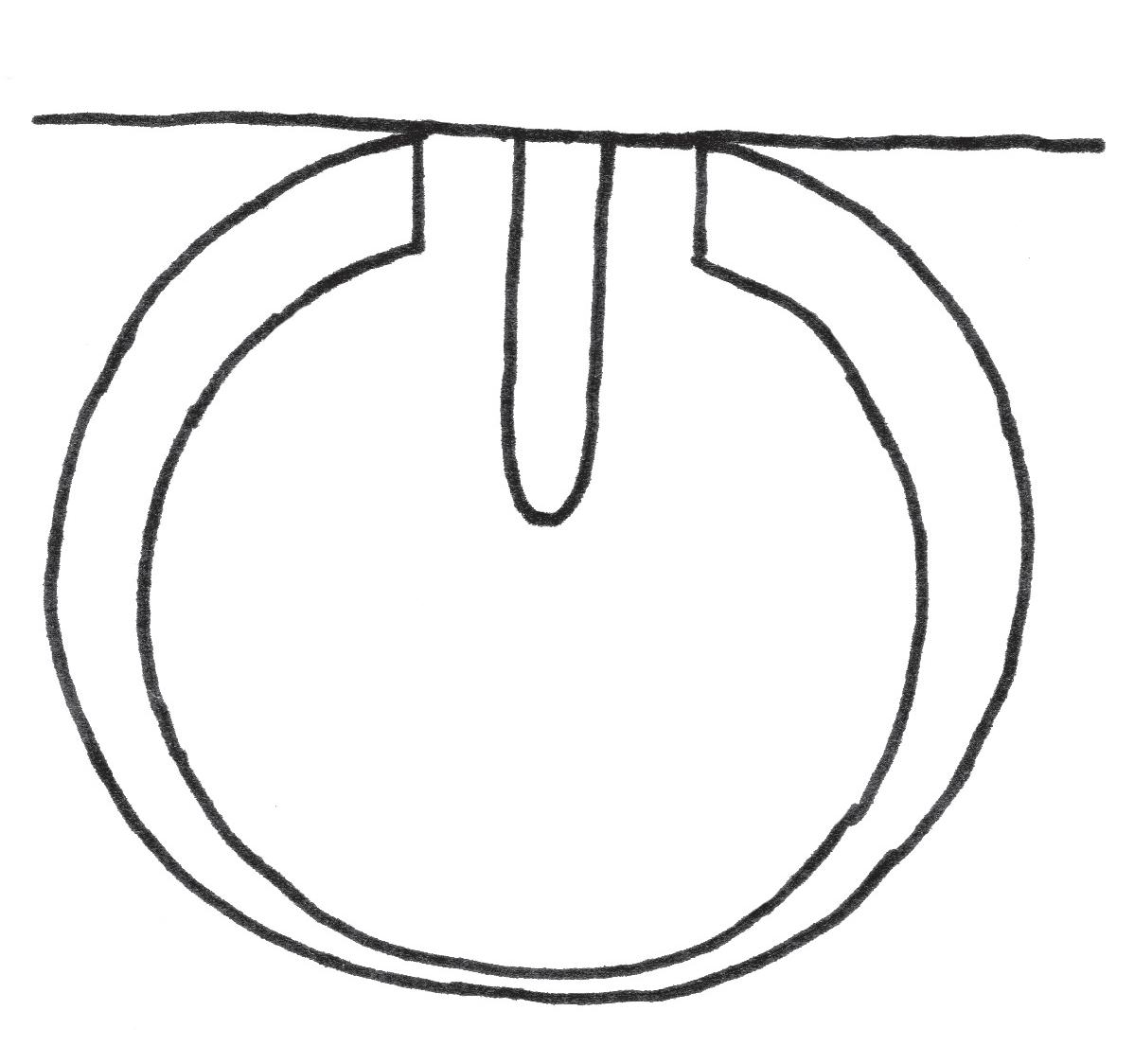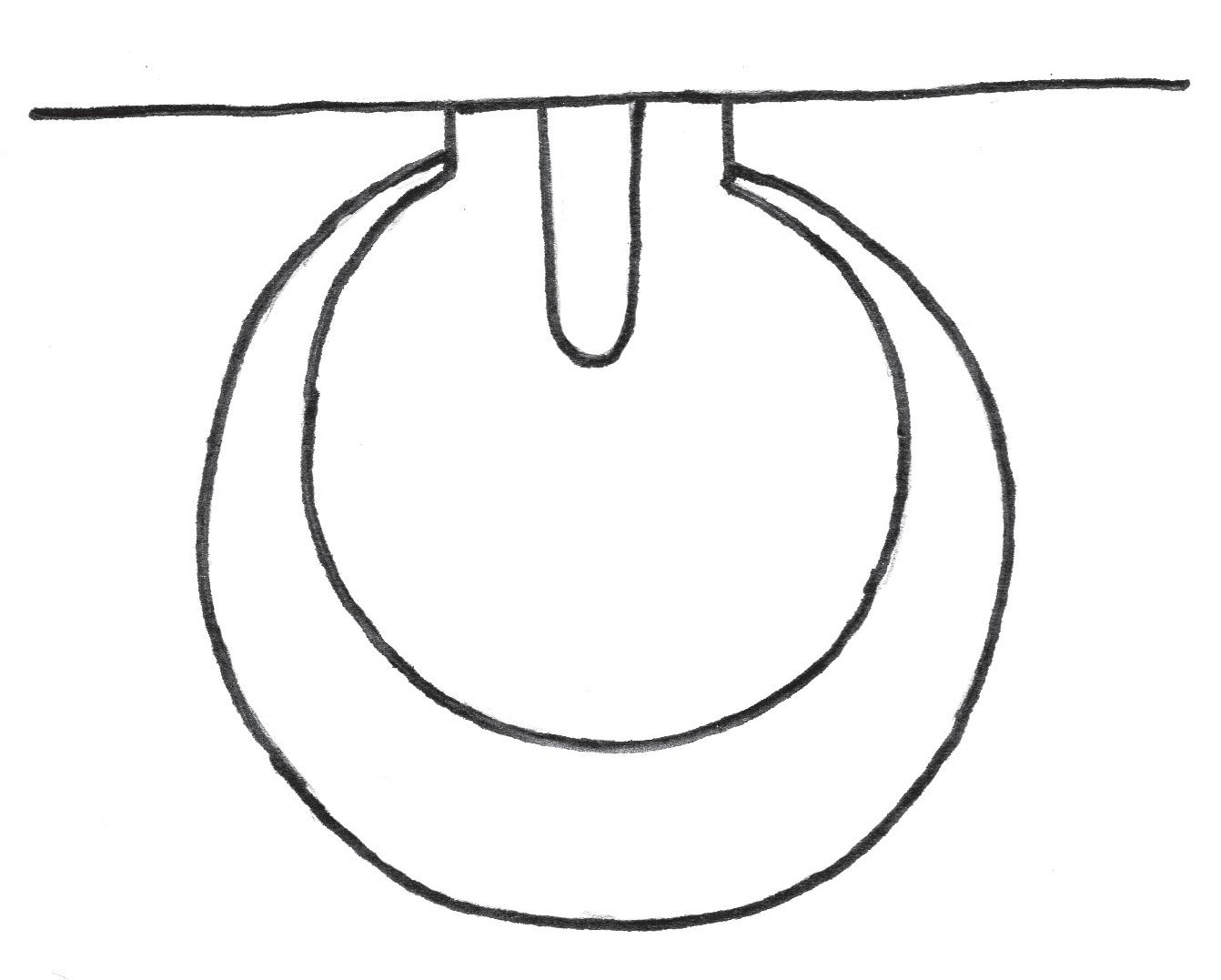
3 minute read
References
from THE USE OF MATERIALS AND THEIR INFLUENCE ON A SPACE - A precedent study on the Elbphilharmonie
by f_marx
Grand Hall Lighting The lighting in the grand hall is an ornamental element with the conceptual intent of creating a warm and vibrant atmosphere that matches the space. Each individual fixing appears as a dot or globe hanging from the ceiling, picking up another recurring theme of the building. Handmade by a family-owned business in the Czech Republic, the globular lights posed a problem to construct as the glass had to be blown in a way that goes against traditional manufacturing methods18. In order to capture the light and guide it the way Herzog and DeMeuron intended, the globes had to be thicker at the bottom and thinner towards the fixing; however, in traditional hand blowing, the part furthest away from the pipe (in this case the bottom of the globe) would be the thinnest. This made the manufacture of the lights intensely time consuming and expensive.
All fixings are lit by LEDs which are more environmentally friendly but also usually appear technical and sterile so in order to change this,
Advertisement
18 Mack, “Die Elbphilharmonie: Hamburgs Neues Wahrzeichen | HD | ARTE | Doku.” Herzog and DeMeuron made the decision to change the light path directly at the fixing and case the LED in a glass globe that changes the velocity of the rays, making the space appear gentler and warmer. Due to the refractive properties of glass, the rays of light are either reflected at the glass surface or transmitted through it at a different angle and speed19. Essentially, the rays are being diffused by the glass casings and their velocity decreased so that the lighting is less harsh.
Fig. 10 Light Fixtures, Grand Hall; Architect: Herzog and DeMeuron Fig. 11 Traditional Glass Structure vs. the one used for the Grand Hall, (Author’s own)


19 Kopp Glass. 2016. THE PROPERTIES of GLASS. Kopp Glass.
12
Conclusion
For the conclusion of this research, it should be noted that judging the immaterial response of any space is nearly impossible without having been there, as is the case with this essay.
However, to sum up everything that has been stated so far, it is evident that Herzog and DeMeuron have successfully created distinctive atmospheres within the spaces of the Elbphilharmonie for the majority of people. Multiple senses are engaged within the journey through the building starting with the audiovisual entrance where the visitor is forced to remain still whilst being carried through a tunnel detached from the city. They are then led onto a panoramic platform that is seemingly without boundaries and exposes the visitor to the elements, such as rain and sunshine or the smell of the sea. The platform also poses a breathing space after the forced and enclosed entrance. Continuing the journey, they are led into the foyer, which is significantly darker than the other rooms so far. Here, you are also met with the smell and familiarity of the hardwood flooring which stands in composition with the black marble ultimately forming a comfortable and intimate space. The chamber hall is clad in the same French oak as the foyer which makes the journey more seamless and also makes the chamber seem more intimate. It is also very haptic, as some of the staff have explained that they enjoy touching the milled wooden surface. The upper floors are reserved for the grand hall, the main attraction of the building. Clad in a white skin which is engineered to create the perfect audio experience, it is not surprising to see people close their eyes whilst listening to a concert to fully absorb the music without the visual clutter of the rather busy surface.
Looking at the bigger picture, the work of Herzog and DeMeuron is important for contemporary architecture because they engage with different disciplines for every project. The artists they consult and work with are usually more qualified to create an intimate response with the viewer than an architect would be and the synthesis of the work between the two professions is something a lot more architects should strive for.
13




